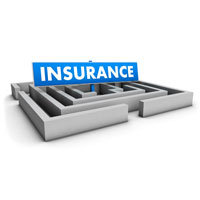Auto Insurance in Standish, ME – 7 Discounts You May be Losing Out On

If you’ve never shopped for auto insurance online, it’s easy to be confused due to the large number of auto insurance companies offering insurance in Standish.
Consumers need to check auto insurance prices on a regular basis because rates fluctuate regularly. Just because you found the best price six months ago there may be better deals available now. Forget all the misinformation about auto insurance because you’re about to learn the best methods to find better coverage at a better price.
Take advantage of discounts
Companies don’t always list all their discounts very well, so here is a list both well-publicized and the more hidden auto insurance savings.
- Seat Belts Save more than Lives – Drivers who require all occupants to buckle their seat belts could save 15% off your PIP or medical payments premium.
- Early Switch Discount – Some insurance companies reward drivers for switching to them prior to your current policy expiring. It’s a savings of about 10%.
- Fewer Miles Equal More Savings – Low mileage vehicles could be rewarded with better rates on cars that stay parked.
- Air Bag Discount – Vehicles with factory air bags and/or automatic seat belt systems may earn rate discounts of 20% or more.
- Claim Free – Good drivers with no accidents can earn big discounts as compared to frequent claim filers.
- Distant Student – Children who live away from home and do not have a car can be insured at a reduced rate.
- Defensive Driver – Completing a driver safety course could cut 5% off your bill if your company offers it.
Consumers should know that most credits do not apply to your bottom line cost. The majority will only reduce the price of certain insurance coverages like collision or personal injury protection. So despite the fact that it appears you can get free auto insurance, auto insurance companies aren’t that generous.
For a list of providers with discount auto insurance rates in Standish, click this link.
Don’t I need to talk to an agent?
Some consumers prefer to sit down with an agent and that is a personal choice. The biggest benefit of comparing rates online is that you can obtain the lowest rates and still have an agent to talk to.
Upon completion of this form (opens in new window), your insurance data is instantly submitted to insurance agents in Standish who will compete for your coverage. You won’t need to leave your house since price quotes are sent immediately to your email address. It’s the lowest rates without the usual hassles of price shopping.
Picking a company requires more thought than just the bottom line cost. Any agent should have no problem answering these questions:
- Can they provide you with a list of referrals?
- If your car is totalled, how to they determine the replacement cost?
- If you have an accident, are you able to get your vehicle repaired at the shop of your choice?
- Are there any hidden costs in their price quote and does it include driving and credit history?
- Which company do they place the most coverage with?
- How are they compensated?
To view a list of agents in Standish to contact, please view this page.
Upon getting acceptable answers to your questions and locked in a price quote, you’ve probably found an provider that will adequately provide auto insurance. But remember, consumers can terminate your policy at any point so never assume you are locked into any specific agency with no way to switch.
The coverage is in the details
Knowing the specifics of your policy helps when choosing the right coverages and the correct deductibles and limits. The coverage terms in a policy can be confusing and reading a policy is terribly boring.
Liability coverages – This coverage provides protection from damages or injuries you inflict on people or other property that is your fault. Coverage consists of three different limits, bodily injury for each person injured, bodily injury for the entire accident and a property damage limit. You might see values of 50/100/50 that translate to $50,000 bodily injury coverage, a limit of $100,000 in injury protection per accident, and $50,000 of coverage for damaged propery.
Liability coverage pays for things such as repair bills for other people’s vehicles, structural damage and emergency aid. How much coverage you buy is a personal decision, but buy as much as you can afford. Maine state minimum liability requirements are 50,000/100,000/25,000 but drivers should carry more coverage.
Uninsured Motorist or Underinsured Motorist insurance – This gives you protection when the “other guys” are uninsured or don’t have enough coverage. This coverage pays for medical payments for you and your occupants and damage to your vehicle.
Due to the fact that many Maine drivers only purchase the least amount of liability that is required (50/100/25 in Maine), it only takes a small accident to exceed their coverage. So UM/UIM coverage is very important.
Insurance for medical payments – Medical payments and Personal Injury Protection insurance reimburse you for bills for nursing services, EMT expenses, surgery and chiropractic care. The coverages can be used to fill the gap from your health insurance policy or if there is no health insurance coverage. Coverage applies to both the driver and occupants as well as any family member struck as a pedestrian. Personal injury protection coverage is only offered in select states but can be used in place of medical payments coverage
Collision – Collision coverage covers damage to your vehicle resulting from colliding with an object or car. You first must pay a deductible then your collision coverage will kick in.
Collision insurance covers claims such as rolling your car, backing into a parked car and crashing into a building. Collision coverage makes up a good portion of your premium, so you might think about dropping it from vehicles that are 8 years or older. You can also choose a higher deductible to get cheaper collision coverage.
Comprehensive coverage (or Other than Collision) – This pays for damage caused by mother nature, theft, vandalism and other events. You first have to pay a deductible and the remainder of the damage will be paid by comprehensive coverage.
Comprehensive insurance covers things like theft, damage from a tornado or hurricane and falling objects. The maximum amount you’ll receive from a claim is the cash value of the vehicle, so if it’s not worth much more than your deductible it’s not worth carrying full coverage.
Find out more about auto insurance
Even more information is available at the Maine Bureau of Insurance website. Visitors are able to download brochures, read industry bulletins, get help finding coverage, and file complaints about an insurance agent or broker.
A little work can save a LOT of money
We just covered a lot of ways to lower your auto insurance rates. The key concept to understand is the more providers you compare, the better your chances of lowering your rates. You may be surprised to find that the most savings is with a company that doesn’t do a lot of advertising.
As you restructure your insurance plan, it’s not a good idea to skimp on critical coverages to save a buck or two. There have been many situations where an insured cut comprehensive coverage or liability limits only to find out that the few dollars in savings costed them thousands. The proper strategy is to purchase a proper amount of coverage for the lowest price while still protecting your assets.
Drivers who switch companies do it for any number of reasons including being labeled a high risk driver, questionable increases in premium, extreme rates for teen drivers or not issuing a premium refund. Regardless of your reason, switching companies is pretty simple and you could end up saving a buck or two.


